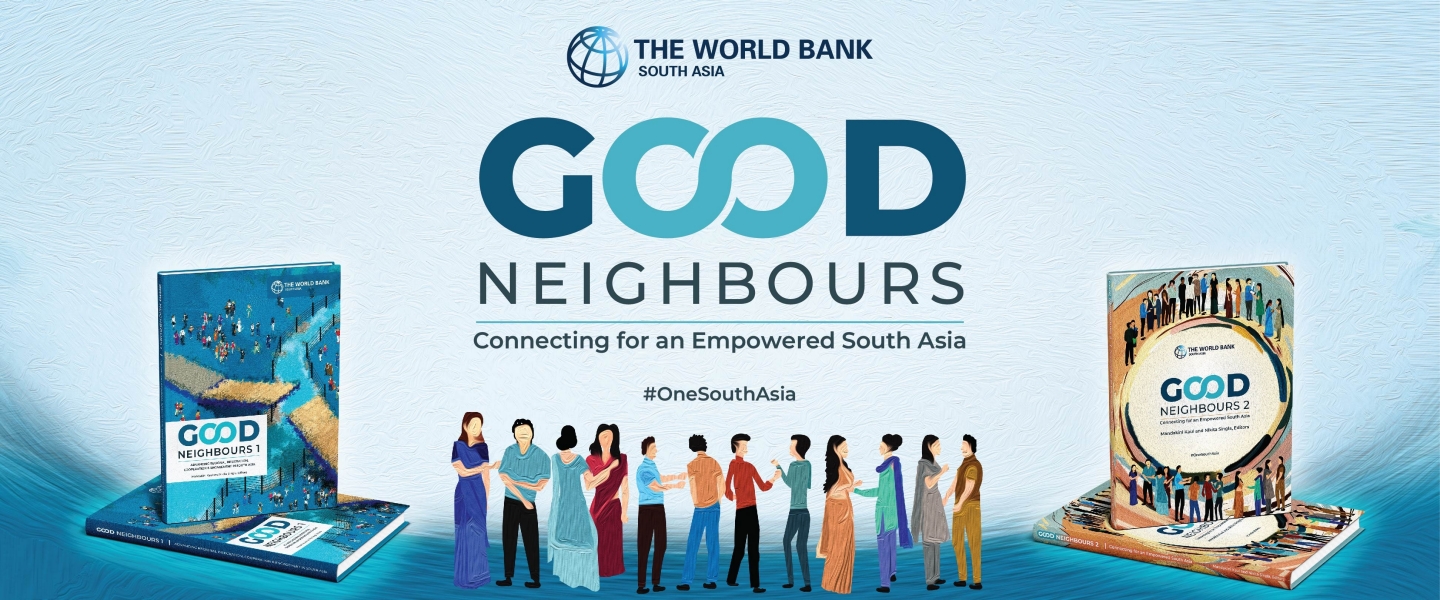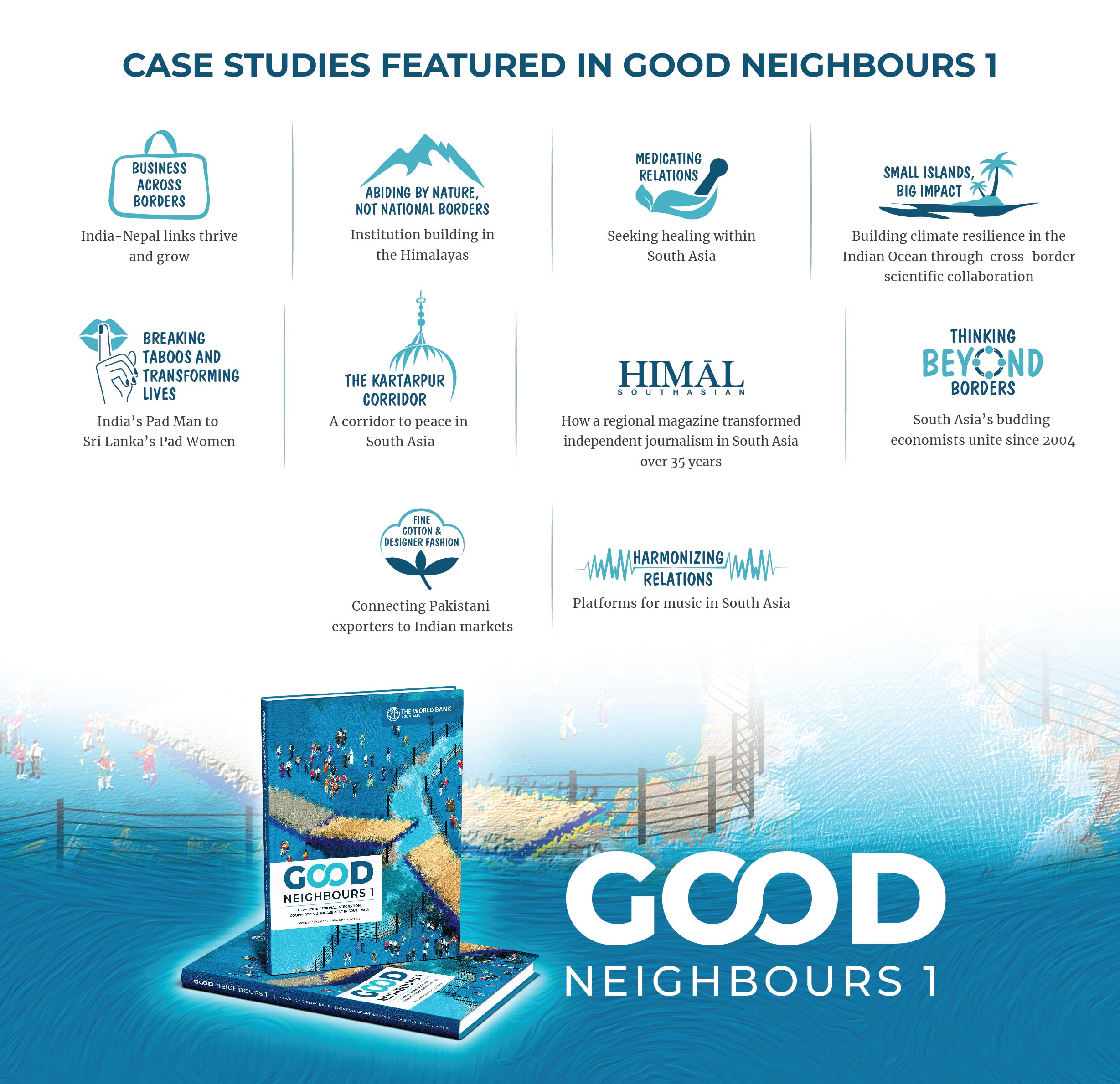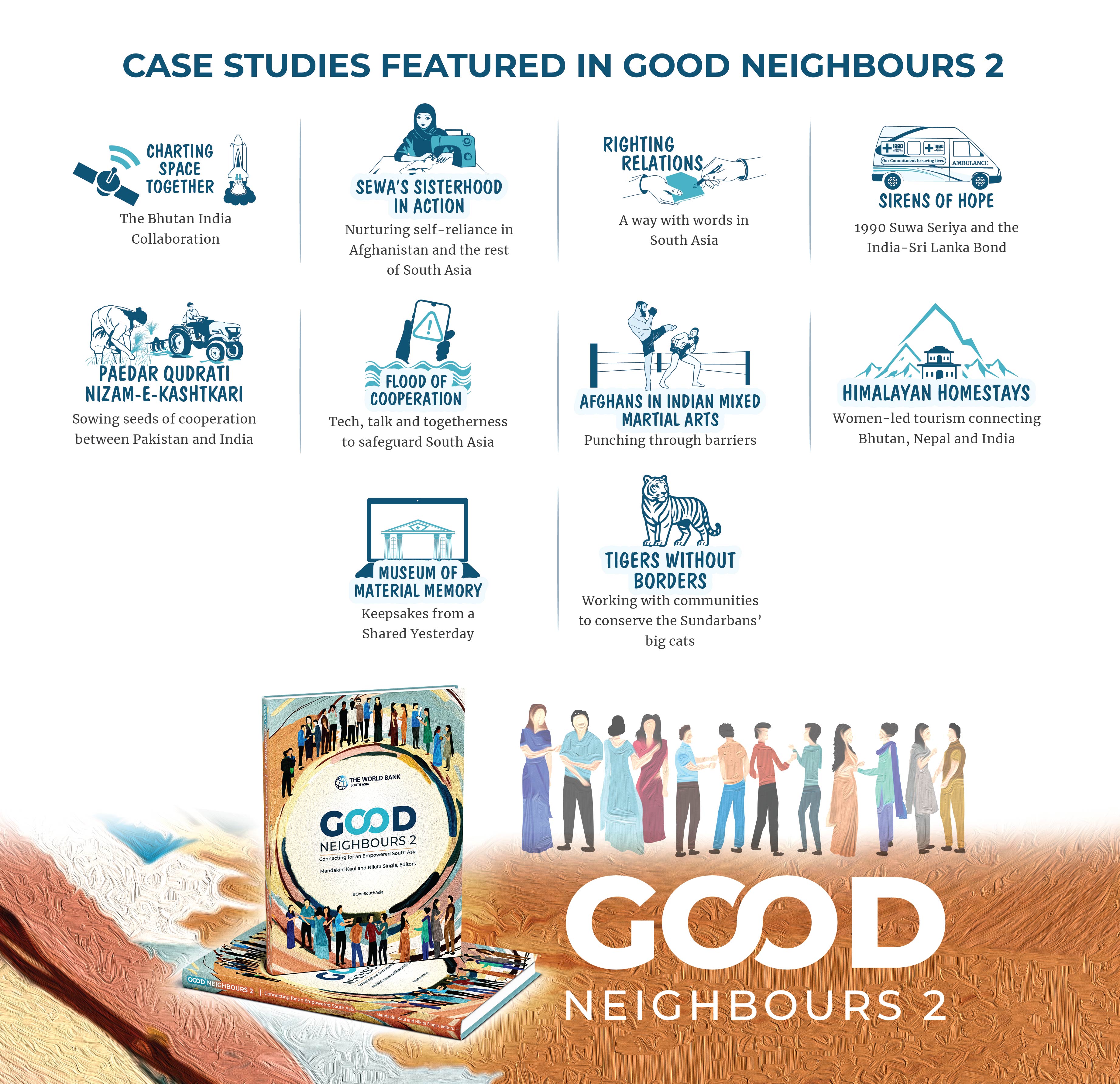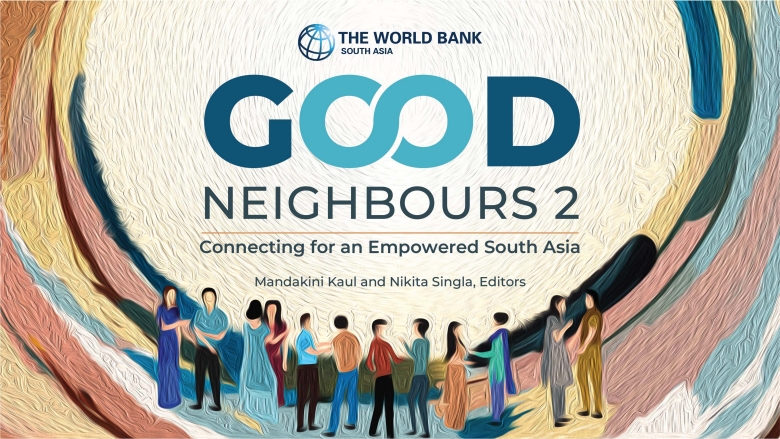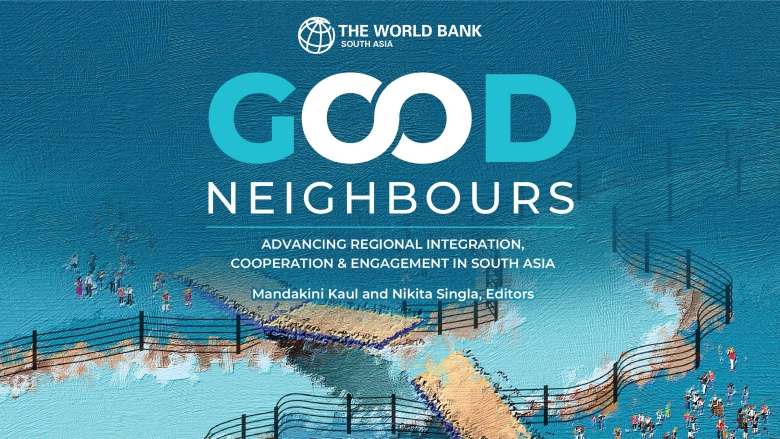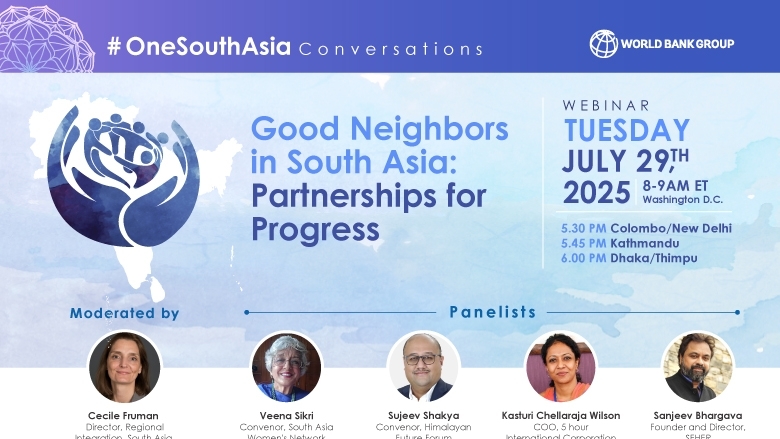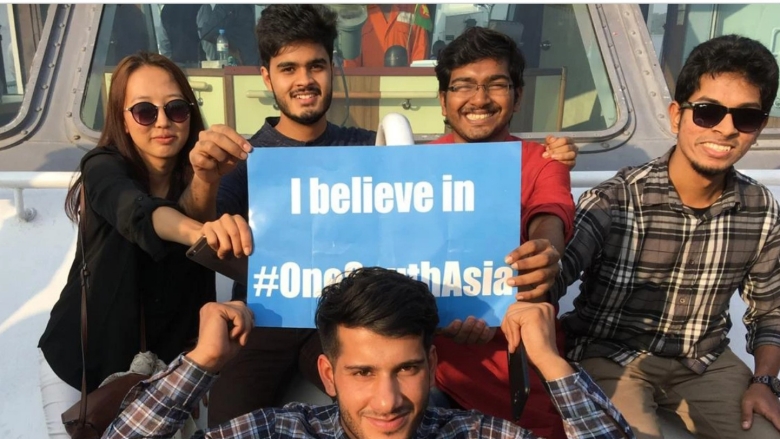About the Series
The Good Neighbours series showcases successful cross-border stories that promote understanding, trust, and people-to-people contacts. Regional cooperation is not easy. It requires vision. It also demands innovation, and above all, perseverance, to bring together people, businesses, and nations. The Good Neighbours stories are as diverse as South Asia. We present them as inspiration and optimism about the spirit of #OneSouthAsia.
The World Bank’s Regional Integration, Cooperation and Engagement (RICE) approach supports transboundary work in South Asia to advance economic connectivity, climate resilience, and human development.
Why Good Neighbours
As development practitioners, we habitually analyze the low levels of intra-regional cooperation in South Asia and highlight how trade, connectivity, and infrastructure within these countries are amongst the lowest in the world. However, what we often overlook are the small but significant ways in which people do come together, usually with a great deal of innovation and fortitude and mostly in the face of significant barriers. As each Good Neighbours case study highlights, these barriers can be transcended through human connection and a shared purpose. From students engaging in lively debates at the South Asia Economic Students Meet to musicians from diverse backgrounds uniting in cultural harmony, as covered in Good Neighbours 1, these stories are a testament to the steadfast but largely unrecognized efforts that shape the region’s future.
Fostering an authorizing environment for regional integration and cooperation is a slow and incremental process. South Asian countries enjoy geographical proximity, cultural similarity, common languages, and a shared history of economic development. Translating their individual growth ambitions into tangible pan-regional gains requires momentum on the ground and a recognition that the regional can significantly contribute to and enhance the domestic.
The road to stronger regional cooperation may be long, and the hurdles formidable, but the stories in Volume 1 and 2 of Good Neighbours serve as a powerful reminder of the potential for collaboration when people rise above differences and work towards common goals. They offer hope that, despite South Asia’s complexities, the region can move toward a more integrated, cooperative future.
